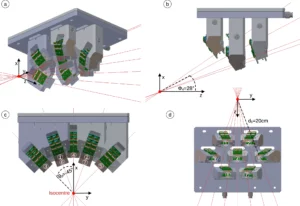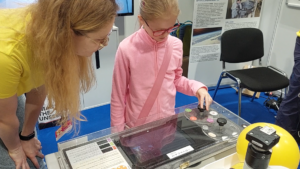Planet Earth was hit by a geomagnetic storm of the highest magnitude in early May 2024. Many all over the world, including Czechia, were able to see a distinctive aurora borealis. It was a geomagnetic storm of category G5, which can be very dangerous. It can, for example, induce huge currents in high voltage power lines, disrupt radio communications or destroy satellites in orbit.
In this context, NOAA has reported irregularities in the power grid, deterioration of high-frequency communications and GPS signal outages. Connection issues were also reported by some users of the Starlink network.
The radiation environment in low Earth orbit (LEO) aboard the Internationa Space Station (ISS) differs significantly from conditions on Earth. While direct measurements are already being made, new methods are emerging. One of these methods involves the use of radiation monitors based on detector technology from the Timepix family. These advanced devices provide insight not only into the dose and flux of radiation, but also particle composition, linear energy transfer (LET), directivity and other parameters.
NASA currently uses more than 10 radiation monitors based on ADVACAM technology on the ISS, but it does not yet use some of the advanced features that a Czech astronaut could test on the station.
Having detailed information about the radiation environment is essential for monitoring and possible space weather forecasting. An accurate space weather forecasting capability is key to ensuring protection of the human crew and any sensitive equipment.
Obtaining accurate data for space weather assessment requires an astronaut with the ability to operate and position radiation monitors inside the ISS. The devices would be connected to any computing unit (PC, uController) and once set up, would continuously sense and monitor radiation environment.
Analysis of the data from such an experiment would greatly improve our understanding of space weather and would allow us to predict events such as solar flares, which are a threat to crew and electronic devices.
In conjunction with this research, a trained astronaut can also play a key role by conducting a series of of educational radiation measurements. The aim of these outreach activities, whether through online live broadcasts or short videos, is to share valuable knowledge about the radiation environment, associated risks and the need for protection with the general public.
Expected benefits:
The results of the analysis will be used to assess the space weather situation and improve forecasting strategies to ensure the safety of future crews and the longevity of satellites in orbit.
Educational videos will raise awareness of radiation protection, measurement techniques and capabilities of Timepix-based detectors. It will also highlight the involvement and key role of the Czech industry in such activities.
Accurate space weather forecasting ensures enhanced crew safety and longevity of satellites in orbit. It also opens up a whole new market for advanced radiation monitors, which is an opportunity for Czech industrial partners who develop and manufacture these devices.
Basic data:
Time required to prepare the experiment or demonstration:
6 months
Duration of the experiment:
Total of 8 hours, including educational activities
Cargo weight:
800g (2x Minipix Timepix3, 2x Minipix Sprinter)
Maximum energy intensity:
12 W total
Data Intensity:
Up to 1 Gb/day



